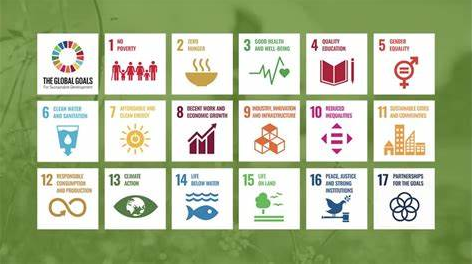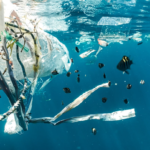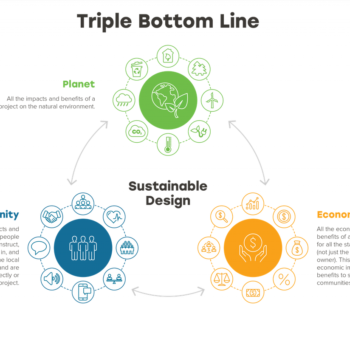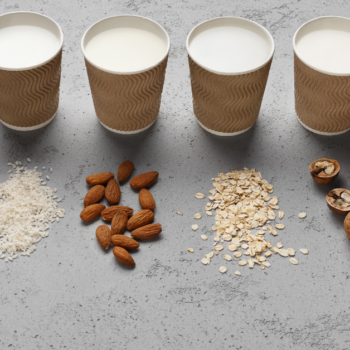|
|
Are you curious how we are progressing toward achieving the United Nations Sustainable Development Goals (SDGs)? Look no further than the SDG Tracker, a powerful tool that measures our advancement in poverty eradication, climate action, and gender equality.
By providing data-driven insights and analysis, this tracker enables us to assess challenges and obstacles, foster collaboration and partnerships, and shape a future outlook for sustainable development. Get ready to dive into progress measurement toward a better tomorrow.
Key Takeaways
- SDG Tracker is a powerful tool for measuring progress towards the Sustainable Development Goals (SDGs).
- It collects data at national and global levels and provides evidence-based insights and analysis.
- The tracker informs policy decisions and fosters collaboration to address challenges hindering sustainability efforts.
- It plays a crucial role in shaping the future outlook for sustainable development and enables informed decisions for positive change.
What are SDGs?
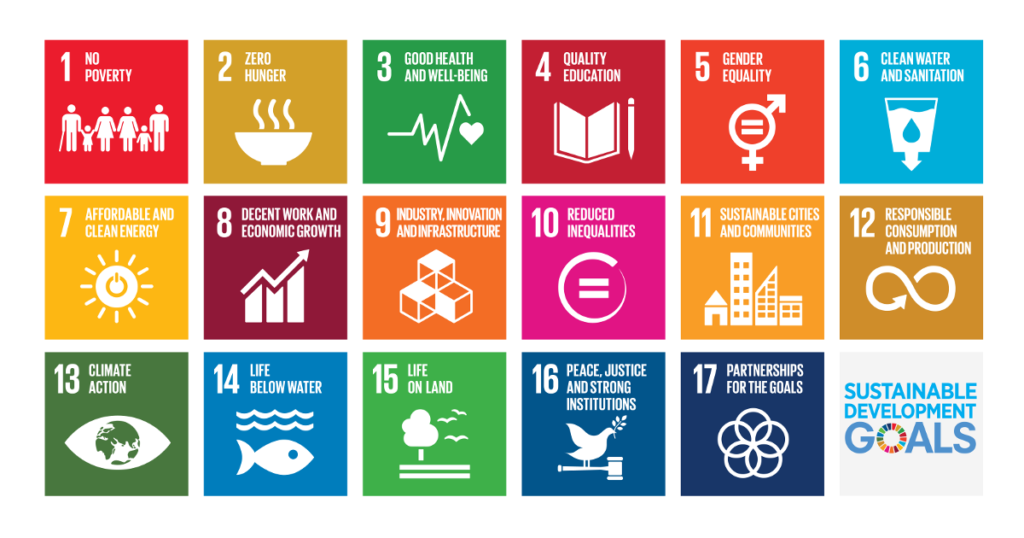
The United Nations Sustainable Development Goals (SDGs) are 17 goals adopted by all UN member states in 2015 as part of the 2030 Agenda for Sustainable Development.
These goals address today’s various social, economic, and environmental challenges, such as poverty, hunger, gender inequality, climate change, and sustainable consumption and production. Over the years, there has been a significant evolution in global sustainability efforts, with a growing recognition of the need for collaborative action and innovative solutions from governments, businesses, civil society organizations, and individuals.
Some key players and organizations involved in setting and promoting sustainability goals include the UN Development Programme (UNDP), World Bank Group, International Monetary Fund (IMF), non-governmental organizations like Greenpeace and WWF, and multinational corporations committed to corporate social responsibility. Successful examples of global sustainability initiatives include the Paris Agreement on climate change and the Global Compact initiative that encourages businesses to adopt sustainable practices.
Brief Overview of the United Nations SDGs
Achieving the United Nations Sustainable Development Goals (SDGs) requires a global effort. The SDGs were adopted by world leaders in 2015 as a blueprint for creating a more sustainable and equitable future by 2030. These goals address various aspects of development, including poverty eradication, quality education, gender equality, clean energy, and climate action.
To measure progress towards these goals, the SDG Tracker was created. This online tool provides real-time data on each goal’s indicators and allows policymakers and citizens to monitor global, regional, and national progress. By tracking these indicators, we can identify areas where more action is needed and make informed decisions to ensure that no one is left behind in our journey toward a more sustainable future.
For more information about SDG, you can watch here: https://youtu.be/1wYKvRq-iEw
Key Players and Organizations
Key players and organizations are actively working towards setting and promoting sustainability goals globally. The SDG Tracker is an important tool for measuring progress toward these goals, which provides data-driven insights into the Sustainable Development Goals (SDGs). This online platform allows users to monitor advancements, challenges, and trends across various indicators of poverty eradication, health, education, climate action, and more.
The United Nations is crucial in coordinating efforts among nations through its Sustainable Development Goals Network (SDG Network). Additionally, non-governmental organizations like World Wildlife Fund (WWF) and Greenpeace contribute by advocating for policy changes and implementing conservation projects.
Furthermore, private sector companies such as Unilever and Google have made significant commitments towards sustainable development through their business practices. These key players and organizations collaborate to drive global progress toward achieving the SDGs.
Examples of Successful Global Sustainability Initiatives
Look at some successful global sustainability initiatives that have significantly addressed environmental challenges. These initiatives are crucial in measuring progress towards the sustainable development goals (SDGs) and promoting a more sustainable future.
- The Global Green Growth Institute (GGGI) has been instrumental in assisting countries to develop low-carbon, climate-resilient economies. They provide technical assistance and policy advice to help countries achieve their SDG targets.
- The Renewable Energy Policy Network for the 21st Century (REN21) works towards advancing renewable energy worldwide. Through their annual report, they track progress on renewable energy adoption, providing valuable insights into global trends and developments.
- The World Wildlife Fund’s Living Planet Report is essential in measuring biodiversity loss and its impact on ecosystems. It highlights the urgency of conserving natural resources and encourages action towards a more sustainable planet.
These examples demonstrate how organizations actively work towards achieving the SDGs and making measurable progress in global sustainability initiatives.
Overview of the 17 SDGs and Their Targets
You can start by understanding the overview of the 17 SDGs and their targets.
The United Nations established the Sustainable Development Goals (SDGs) to address pressing global challenges and promote sustainable development. Each goal focuses on poverty eradication, quality education, or climate action.
Multiple targets outline specific actions and indicators for measuring progress within each goal. For example, under Goal 1: No Poverty, one target is to reduce at least half the proportion of men, women, and children living in poverty by 2030.
The SDG Tracker is a valuable tool for monitoring progress towards these goals and provides data-driven insights into areas where more work is needed. By tracking these targets and measuring progress, we can ensure we are on track to achieve the Sustainable Development Goals by 2030.
How to Use the SDG Tracker
You can access the SDG Tracker by visiting the official website: https://sdg-tracker.org/.
To use the SDG Tracker, follow these steps:
- Open your web browser and go to https://sdg-tracker.org/.
- On the website’s homepage, you will see a list of the 17 Sustainable Development Goals (SDGs).
- Click on the specific SDG you’re interested in tracking progress for. This will take you to a page dedicated to that goal.
- On the goal-specific page, you’ll find various indicators related to that goal, along with data visualizations and explanations.
- Explore the different indicators, graphs, and information to get an understanding of progress, challenges, and trends.
- You can navigate through different goals and indicators using the menu options provided on the website.
Remember that the SDG Tracker is a valuable tool to understand how the world is progressing towards the Sustainable Development Goals. It provides insights and data-driven information to help you stay informed about global efforts for a better future.
Importance of each goal in the context of global sustainability
Each goal plays a crucial role in ensuring global sustainability. The SDG Tracker is essential for measuring progress towards the Sustainable Development Goals (SDGs). It helps us understand the importance of each goal and its impact on global sustainability.
For example, Goal 1 aims to end poverty in all forms, which is fundamental for creating a sustainable world where everyone has equal opportunities. Goal 13 focuses on climate action, recognizing the urgent need to mitigate climate change and its devastating effects on our planet.
By tracking progress towards these goals and others like them, we can identify areas that require more attention and resources to achieve a sustainable future for all. Understanding the importance of each goal enables policymakers, organizations, and individuals to take meaningful action toward building a better world.
Progress Made toward Achieving the SDGs
Significant strides have been made in achieving the global sustainability goals. According to the SDG Tracker, an initiative by the United Nations and World in Data, progress towards the Sustainable Development Goals (SDGs) is being tracked and measured.
Here are some key findings:
- Poverty reduction: The number of people living in extreme poverty has decreased significantly.
- Education: Primary school enrollment rates have improved globally, but disparities exist.
- Gender equality: Women’s representation in politics and decision-making positions has increased, but gender-based violence remains a major concern.
- Clean energy: Renewable energy consumption is rising, but fossil fuel dependency continues to contribute to climate change.
- Health and well-being: Child mortality rates have declined, and access to clean water and sanitation has improved.
These advancements demonstrate that efforts toward achieving the SDGs are making a tangible impact. However, challenges remain, and continued action is necessary for sustainable development worldwide.
Challenges and Solutions for Global Sustainability
The 2022 SDG Report checks how we’re doing on the plan for a better life by 2030. It uses new data for the 17 goals. The report shows big problems like COVID-19, climate change, and conflicts making the plan wobble. They hurt things like food, health, and peace – and all the goals. We’re going backward on things like stopping poverty, hunger, and giving good health and education, the report says. It points to quick actions needed to save the goals and improve life by 2030.
To achieve global sustainability, it’s vital to tackle obstacles head-on. The SDG Tracker helps identify key challenges to progress.
Obstacles: Limited awareness of SDGs among stakeholders, lack of funding, and data gaps hinder progress.
Role of Stakeholders: Governments shape policies, businesses integrate sustainable practices, and individuals make conscious choices.
Collective Impact: Together, they drive change, offering hope, seizing opportunities, and making a significant impact.
Innovative Solutions for Progress
Innovative solutions are crucial for overcoming obstacles to global sustainability.
Tracking Progress: Monitoring SDG indicators guide improvements and informed decisions.
Stakeholder Involvement: Governments, businesses, and individuals play roles in policymaking, eco-friendly practices, and personal choices.
Leveraging Innovation: Tech-driven collaborations and data solutions accelerate SDG achievements.
Frequently Asked Questions
The sustainable development goals (SDGs) are 17 goals established by the United Nations (UN) to address the world’s most pressing social, economic, and environmental challenges. They cover many issues, such as poverty, inequality, climate change, education, health, etc.
The SDG Tracker is an online resource that provides up-to-date data and progress information on the 17 sustainable development goals. It is a hub for information and data visualizations related to the SDGs, making it accessible and understandable for the general public, researchers, and governments.
The SDG Tracker can be accessed on the World in Data website. It is a free and open-access platform that makes a wide range of data available to everyone.
The SDG Tracker provides a wealth of data and information on the 17 goals and their respective targets. It allows people to track progress, identify gaps, and understand the current state of global development across various dimensions. The data visualizations make it easier to comprehend complex information and trends.
Yes, the data on the SDG Tracker is sourced from reputable and official sources. The World in Data team works closely with researchers and organizations to ensure the data is accurate, reliable, and up to date.
Absolutely! The SDG Tracker provides open-access data that can be used by researchers, policymakers, students, and anyone else who needs information related to sustainable development goals. The freely available data can support research, analysis, and decision-making processes.
A total of 169 targets accompany the 17 sustainable development goals. These targets provide specific objectives and indicators to measure progress toward achieving the goals.
The SDG Tracker aims to hold governments accountable and provide a comprehensive online resource for tracking progress toward sustainable development goals. It also aims to raise awareness about the goals and encourage collaboration towards their achievement.
Yes, the SDG Tracker is optimized for mobile devices and can be accessed on smartphones and tablets. This allows for convenient access to the data and information while on the go.
Currently, the SDG Tracker is only available in English. However, efforts are being made to translate the content into other languages to reach a wider audience and enhance accessibility.
Conclusion
In the journey towards a better world, the SDG Tracker stands as a guiding light, illuminating the path of progress towards the Sustainable Development Goals. With data as its compass and unity as its driving force, this powerful tool showcases the collective efforts of nations, communities, and individuals working tirelessly to transform our planet.
As we measure advancements and confront challenges, the SDG Tracker reminds us that every step forward, no matter how small, contributes to a brighter future for all. Let’s continue to chart our course, track our achievements, and build a world where sustainability and prosperity intertwine for generations to come.
